
views
Deciding to Get a Restraining Order

Identify threats or abuse. A restraining order may be filed to protect you and your children from an abuser or stalker. You should get a restraining order if your abuser has caused either physical or mental harm in the past or if they pose a possible threat in the future. There are many actions that can be considered threats. It is abuse if they threaten to or do inflict physical harm through attacks, strikes, or rough physical contact to you or your children. It is abuse if they commit sexual assault or molestation against you or your children. It is also a threat to you if they harass or stalk you or your children. The destruction of personal property is also considered a threat to you and your children's life. For example, a woman and her children are being bothered by the woman's previous boyfriend. One day he breaks into the woman's house or car window. When this happens, the woman can file for a restraining order on behalf of herself and her children. Even if the boyfriend still lives in the home, she can get a restraining order if he has acted violently toward her and her children.

Ask for help. Getting a restraining order is a fairly straightforward process, but legal documents are often tricky. Don't be afraid to consult an attorney for help with filing the order; this can ensure that it is done correctly the first time. An attorney can also guide you to include details relevant to your order that might make it more likely to be granted by the court. In addition to legal help, remember to rely on emotional support. Contact friends or family members to help you through this difficult time. Consider seeing a therapist or going to a support group for victims of abuse or stalking. If you have children, allow them to see a therapist, too.
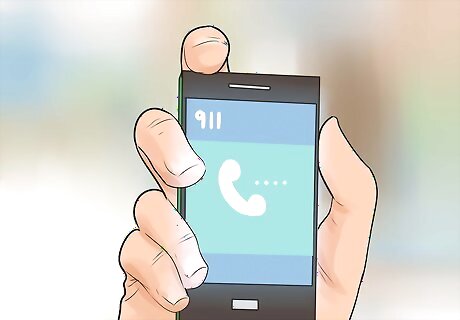
Call 911 any time you feel that you are in danger. Before or after you get a restraining order, you should always call 911 if you feel that you or your children are in imminent danger. A restraining order can only protect you to a certain point, as having one does not guarantee that your abuser will respect the terms of the order. You safety is important and the restraining order can only help if the abuser follows it. If you believe that you or your children are in danger from the abuser, even with the restraining order in effect, call 911. Do not rely on the restraining order for complete protection. It is possible that your abuser will violate the order and cause you serious harm.
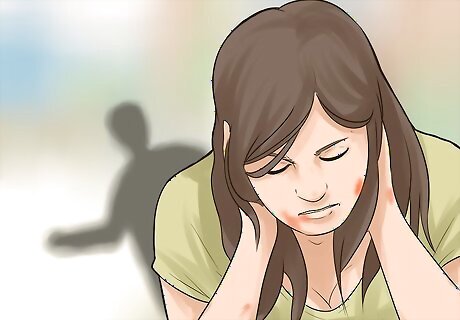
Remember that abuse is never your fault. Many victims of abuse hesitate to take legal action against abusers because they feel that they have brought the abuse upon themselves. Regardless of your own words and actions, abuse is not your fault. You deserve to live a happy life, free from threats and fear.
Filing a Restraining Order

Obtain the proper forms. You need to visit the courthouse in your county. You may also need one from the other party's county or the county where the abuse took place. You need to ask the clerk at the courthouse for a request form for the type of restraining order you wish to file. Some areas have these forms on the state website. In this case, you can print the forms out and have them ready when you go to the courthouse.

Get a lawyer involved. Though a lawyer is not required to file a restraining order, you may want to talk with one if you have extra questions about your situation. You should also talk with a lawyer if you find the whole process very confusing. The lawyer can help you fill out the required forms and advise you on what type is needed. You may have questions but don't want to or can't afford a lawyer. In this case, ask for help from your local court staff or an advocate. They may be able to answer your questions. You can call a domestic violence hotline to ask about your options. In some cases, the organization connected with the hotline, such as the National Domestic Violence Hotline, can get a lawyer for you.
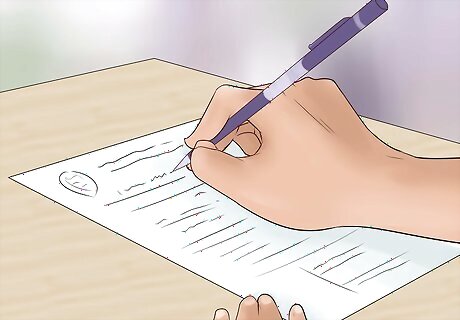
Complete the forms. You will have to fill out a petition for a restraining order. You will also have an affidavit that explains the events that caused you to file the order. This includes all abusive or threatening behavior acted against you or your children. You will need to provide information about the other party's looks and his home and work address. You will also need to bring medical records or police reports that detail any abuse the abuser inflicted on you or your children.
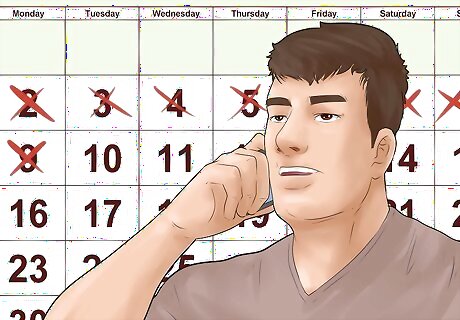
Receive a court hearing. After filing, you will get information about your court hearing. This usually takes one to two days, depending on your state. The hearing is usually scheduled within two weeks of you filing the paperwork. If you asked for an emergency restraining order, the hearing will take place as soon as possible. This is usually within a week. In some states you may request not to have a hearing. A judge can still order one and you have to attend. If you don't wish to have a hearing, your order can be limited. In these cases, the judge can order an abuser to leave the home if you live together. The judge can also ask the abuser to cease threatening their spouse or children. In this situation, the order can require little else.
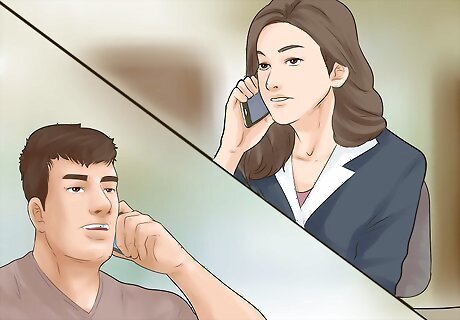
Serve the court order to the abuser. The restraining order is not in effect until the abuser is handed the restraining order papers. You may not give the abuser the papers yourself. If you don't know where the abuser is, special forms must be filled out to explain. You can choose to ask someone over eighteen who is not protected under the order to give your abuser the papers. You can also hire a courier service to do it. You can find a process server by looking in the phone book or an online phone directory. If personal service is required in your state, you will need to have the County Sheriff or a process server give the abuser the papers. When giving the papers this way, the Clerk's Office or the Court will take care the situation. There may be a fee. Call the County Clerk or the Sheriff's Office in your area for more details. In many states, you can give papers to someone by publication. This is only when you cannot locate them. You publish something specified by the court in the newspaper for a certain amount of time. Even if the defendant does not see it, they have been served.
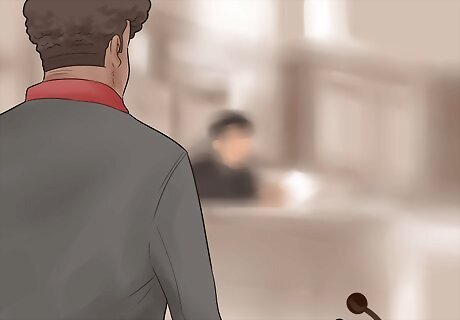
Attend the court hearing. You will need to give testimony supporting your request in front of a judge. You may ask for specific protections at the hearing depending on your situation. Bring evidence to support your claims. This includes any medical or police records and pictures. The abuser is also offered the opportunity to give their side of the story. If the abuser does not show up to the hearing, the restraining order is usually granted. When you attend your hearing, dress nicely and remain calm. Do not yell or show any anger, even if you are angry or upset. This will not help you get a restraining order. Pay attention to how you talk to the judge. You have to go to the hearing or the process will be delayed. You may have a lawyer present at your hearing, but it isn't mandatory.
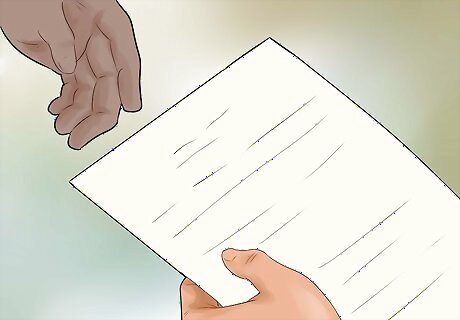
Receive the judge's decision. The judge will usually decide whether to issue the restraining order the same day as the hearing. If your request is granted, the judge will issue a restraining order that can last up to five years. It describes the rights your receive with the order. It also explains the limitations imposed upon the other person. Gain hope through knowledge. "When I first started reading this article, I felt overwhelmed and powerless about my situation with my abusive ex. But having all the steps laid out so clearly, with visuals and details about my rights, left me feeling hopeful. Now I understand I have options to protect myself legally. I have a long road ahead, but I feel confident I can take control again." - Leanne T. Overcome system failures and persist. "After the judge denied my request for a restraining order, I felt so defeated. But this article showed me that as unjust as it seems, the legal system fails people sometimes. Through more research and legal help, I realized the decision wasn't about me personally. Now, I know to keep trying, stay determined despite hurdles, and use all resources available. I owe it to myself and my kids to keep pushing forward." - Toya C. Safeguard a friend from further harm. "When my childhood friend told me her brother had been threatening and assaulting her, my heart broke. I immediately thought of this wikiHow guide on restraining orders. My friend was scared of escalating things legally, but the clear information here helped me walk her through what to expect. Now, thanks to getting an order, the abuse has stopped completely, and she is rebuilding her life." - Genola K. Gain tools to protect yourself and your children. "As a single mom trying to leave an abusive relationship, I constantly worried about my ex's retaliation. But after reading this, I have hope again. My kids and I shouldn't have to live in fear. Now, I understand the step-by-step process to get a restraining order tailored to my situation. I finally have clarity that we can legally protect ourselves while getting fully free of this man for good." - Aderyn A. Did you know that wikiHow has collected over 365,000 reader stories since it started in 2005? We’d love to hear from you! Share your story here.
Using a Restraining Order
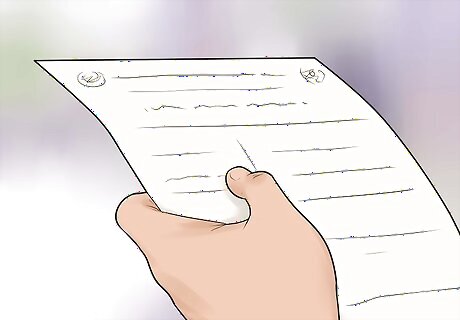
Keep a copy of the order. To protect yourself, you need to have a copy of the restraining order with you at all times. This will help you use it in case the abuser ignores it and tries to contact you. If you have to call the police, the papers will help them understand your situation faster. If you lose your restraining order papers, contact the court for another copy.

Know the violations. If the abuser makes contact or breaks any other rule, they can be picked up by the police. In some states, restraining orders are given by civil courts. These courts handle family matters and problems with property. Normally someone cannot go to prison based upon the rulings of a civil court. In some cases, going against the restraining order can cause the situation to be taken over by the state. In these states, people who go against the rules of a restraining order are brought up on charges for contempt. This causes the case to move from civil court to criminal court. If the order is never broken, the case stays in civil court and does not show up on the abuser's record.

Contact the court. Violations of restraining orders should be reported to the court. The restraining order should clearly state exactly what the other party is not allowed to do. If these rules are violated, they can be arrested and charged with a crime. If the other party fails to return your property, pay child support, or act according to similar orders laid out by the judge, call the court to report them.

Extend or dismiss the order. You can contact the County Clerk to extend or dismiss a restraining order. You will be asked to explain your reasons for wanting to extend or dismiss the order. Each restraining order has an expiration date. It can be renewed, even if a new incident of abuse does not occur. If you wish to live with the person against whom you filed the restraining order, be sure to have it dismissed first. If not, they can get in trouble.
Understanding Restraining Order Basics

Understand the protections. If you file a restraining order, a judge will decide how you will be protected. She bases this on her understanding of the situation. Abusers or stalkers can be ordered to avoid any contact with you and your children. This is in person, by phone, by email or any other medium. Abusers or stalkers can also be ordered not to come within a certain distance of you and your children. This distance is typically 100 yards (91.4 m), but it can be extended well beyond that. If you live with the abuser, they can be ordered to move out. The judge can order that a police escort be there during any needed contact with the abuser. This can be when they return to a shared living space to collect their things.

Know the requirements. There are few requirements that must be fulfilled in order to be eligible for a restraining order. You must be an adult or a minor of a certain age. This age varies by state. You need to show a judge that the person you want the restraining order against is a threat to your physical or mental health. Parents can file restraining orders for minors. Any minor who legally lives on their own can receive a restraining order. The youngest age you can be granted a restraining order is different from state to state. In most states, the minimum age is somewhere between 14 and 18. In California, you can get one by the age of 12.
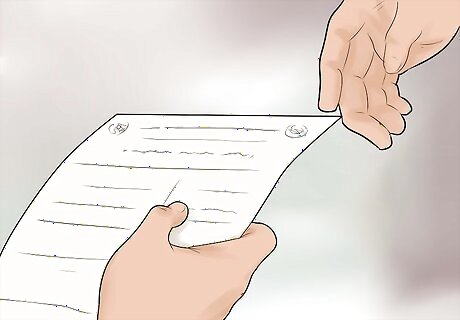
Get the ex parte restraining order. There are many court orders that are commonly called restraining orders. They are all very different. An ex parte restraining order is also known as an emergency restraining order or emergency protective order. It is a temporary order that is issued by the court without the named abuser or stalker there to defend themselves. If you think that someone poses an immediate threat, you can obtain an ex parte restraining order to keep them away. This order can be signed the same day you apply. This means you will be protected before the date of your hearing. Another hearing is necessary to maintain the restraining order. At this hearing, the accused can defend themselves.

Investigate the orders in your state. There are different types of restraining orders that are used by various states. The difference typically depends on which court files the order. It will also vary depending on the person who you are filing the order against. You can file against someone to whom you are related or have a relationship. This can be a spouse, domestic partner, boyfriend, girlfriend, an ex, or the father or mother of one of your children. You can also file an order against a stranger. Make sure you check your state laws to see what kind of orders you can get and with which court you need to file. In California, the Civil Court gives two types of orders, the Domestic Violence Restraining Orders (DVROs) and the Civil Harassment Orders (CHOs). The DVROs are filed against someone you have a relationship with. CHOs are filed against a person you do not know. In New York state, you can get a civil Order of Protection from civil or family court. You can also get a criminal Order of Protection from the criminal courts. The main difference is that you can only get a criminal order the person you are filing against is charged with a crime. The district attorney can must get the order for you. The civil Order of Protection is filed against someone you know. In Georgia, there are also criminal and civil Protective Orders. Family Protective Orders are used specifically for people with whom you have a relationship. This type of order is obtained in family or civil court. Criminal Protective Orders are used to stop those you don't know. This type of order is obtained through the criminal courts.


















Comments
0 comment